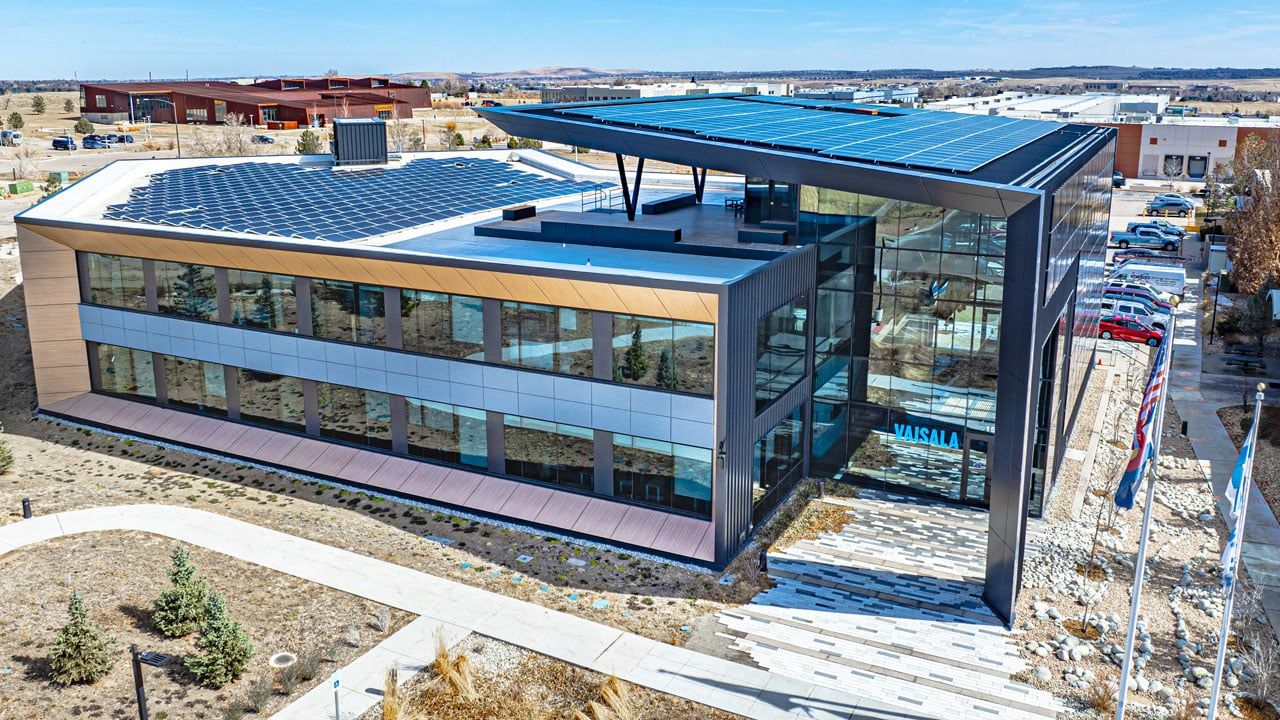Ball places first 2 of 5 instruments on satellite
BOULDER – Two of the five instruments scheduled to fly in 2017 on the nation’s next polar-orbiting weather satellite, NOAA’s Joint Polar Satellite System -1, have been placed aboard the spacecraft by Boulder-based Ball Aerospace & Technologies Corp., the primary contractor.
The Ozone Mapping and Profiler Suite-Nadir – also built by Ball – and the Clouds and Earth’s Radiant Energy System now are aboard the craft, according to a Ball media statement. Next up is the Visible Infrared Imaging Radiometer Suite, which is set to arrive in February.
Ball Aerospace designed and built the satellite, which NOAA – the National Oceanic and Atmospheric Administration – views as critical for continuity of long-standing atmospheric, ocean and land measurements that now are provided by the Suomi National Polar-orbiting Partnership mission. That satellite, which was launched in 2011, also was built by Ball Aerospace.
SPONSORED CONTENT
Commercial Solar is a big investment, but not an overwhelming one
Solar offers a significant economic benefit for commercial property owners while also positively impacting the environment and offering a path to compliance for new municipal requirements like Energize Denver. A local, experienced solar installer will help you navigate the complexities of commercial solar to achieve financial success for your project.
“Integration of JPSS-1 continues to proceed on schedule,” said Cary Ludtke, vice president and general manager of Ball’s Operational Space business unit. “NOAA and NASA are reaping enormous benefit from the Suomi NPP satellite, and maintaining that continuity makes the timely completion and launch of JPSS-1 very important to our nation.”
Data from the Ozone Mapping and Profiler Suite-Nadir is used at NOAA for numerical weather prediction modeling and a variety of environmental observations, such as volcanic-ash monitoring to aid in aircraft safety warnings. CERES, built by Northrop Grumman’s Aerospace Systems division for NASA’s Langley Research Center in Hampton, Va., measures the reflected sunlight and thermal radiation emitted by the Earth.
Ball also anticipates arrival of the Cross-track Infrared Sounder in the first quarter this year, with the Advanced Technology Microwave Sounder to follow.
Under contract to NASA’s Goddard Space Flight Center, Ball Aerospace – a division of Broomfield-based Ball Corp. (NYSE: BLL), is responsible for integrating all instruments >and performing satellite-level testing and launch support.
BOULDER – Two of the five instruments scheduled to fly in 2017 on the nation’s next polar-orbiting weather satellite, NOAA’s Joint Polar Satellite System -1, have been placed aboard the spacecraft by Boulder-based Ball Aerospace & Technologies Corp., the primary contractor.
The Ozone Mapping and Profiler Suite-Nadir – also built by Ball – and the Clouds and Earth’s Radiant Energy System now are aboard the craft, according to a Ball media statement. Next up is the Visible Infrared Imaging Radiometer Suite, which is set to arrive in February.
Ball Aerospace designed and built the satellite, which NOAA – the National Oceanic and…
THIS ARTICLE IS FOR SUBSCRIBERS ONLY
Continue reading for less than $3 per week!
Get a month of award-winning local business news, trends and insights
Access award-winning content today!


